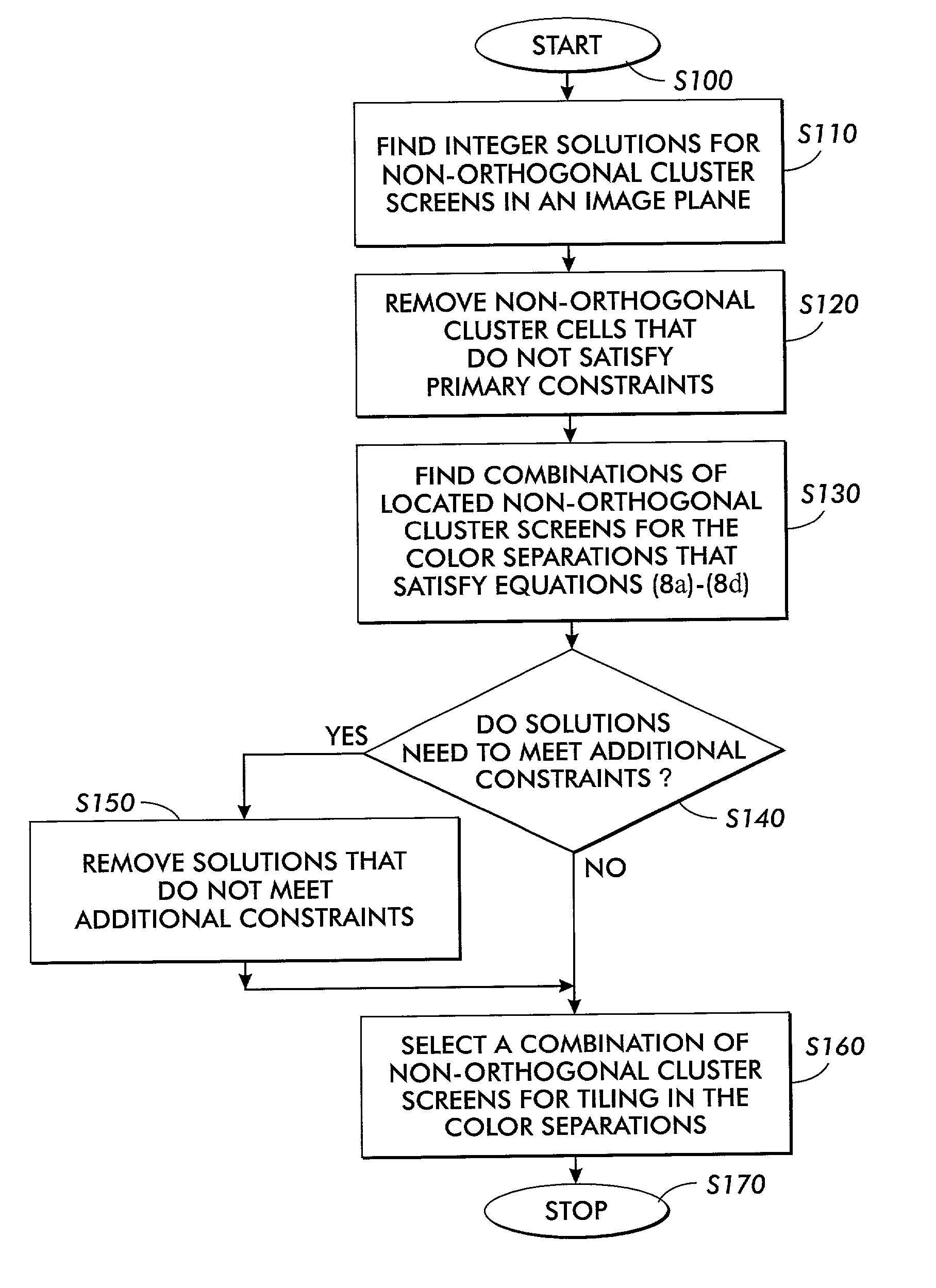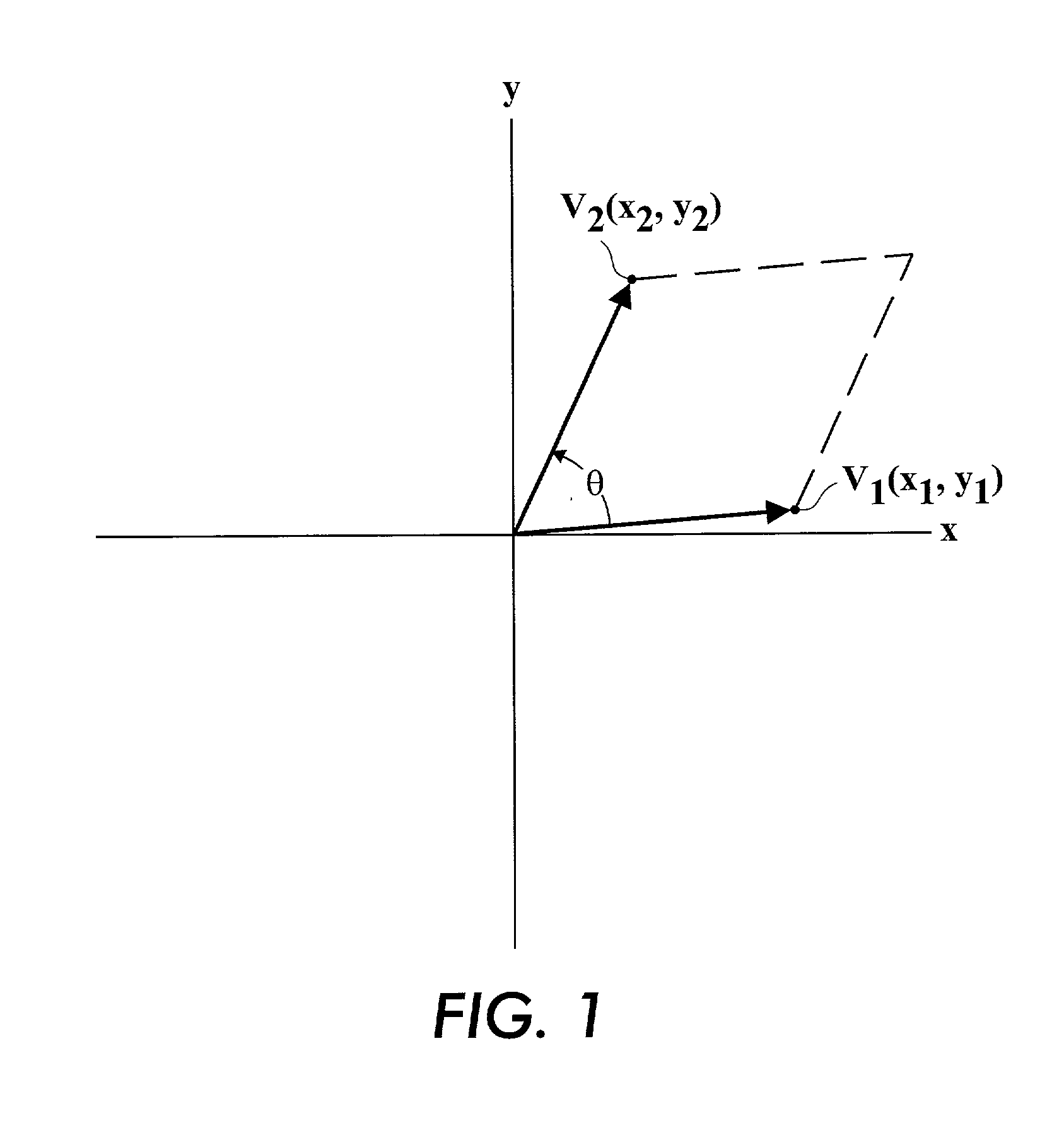Halftoning using dot and line screens to avoid two and three color moire
a color document and dot line technology, applied in the field of substantially moirfree halftone color documents, can solve the problems of limited freedom to rotate a halftone screen, undesirable interference patterns of moir patterns, color halftones are the occurrence of moir patterns
- Summary
- Abstract
- Description
- Claims
- Application Information
AI Technical Summary
Benefits of technology
Problems solved by technology
Method used
Image
Examples
Embodiment Construction
[0043] It is well known that color halftone printers are susceptible to moir patterns. Therefore, there has been a long-felt need for convenient systems and methods for determining the spatial and angular positioning of the halftone dots necessary to avoid moir patterns.
[0044] It should be appreciated that, according to this invention, a single-cell halftone dot does not necessarily have to be square in shape. In fact, in some cases, it is beneficial to consider a more general single-cell halftone dot shape other than a square, such as, for example, a non-orthogonal parallelogram. It should be further appreciated, however, that a square can be considered to be a subset of the more general class of parallelograms. Therefore, the following discussion regarding exemplary non-orthogonal parallelograms can be equally applied to square halftone dots, as desired. It should be further appreciated that a halftone cell does not need to be limited to the single cell type halftones to employ th...
PUM
 Login to View More
Login to View More Abstract
Description
Claims
Application Information
 Login to View More
Login to View More - R&D
- Intellectual Property
- Life Sciences
- Materials
- Tech Scout
- Unparalleled Data Quality
- Higher Quality Content
- 60% Fewer Hallucinations
Browse by: Latest US Patents, China's latest patents, Technical Efficacy Thesaurus, Application Domain, Technology Topic, Popular Technical Reports.
© 2025 PatSnap. All rights reserved.Legal|Privacy policy|Modern Slavery Act Transparency Statement|Sitemap|About US| Contact US: help@patsnap.com



